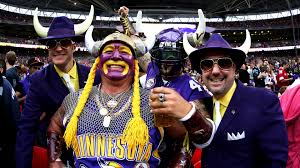Buyers’ remorse over $500 million public investment in Vikings stadium?
Despite three straight losses, it may be premature for Vikings season ticket holders to throw in the towel just yet. There’s a lot of football to be played for a team that still claims first place in the Central Division.
But there could be significant losses occurring in U.S. Bank Stadium whether the team tees it up or not, according to local business columnist Lee Schafer.
Investing in an NFL stadium in downtown Minneapolis is starting to look a little like buying RCA stock in the summer of 1929, gold in 1980 or shares of Apple stock last May.
We decided to sink a half-billion tax dollars into a gleaming U.S. Bank Stadium that finally opened the very season the audience for NFL games started slipping. So we were buying professional football at the peak of the market. What chumps.
Wins and losses are a part of the game, but for the first time the NFL is losing the ground game for television viewers and the resulting advertising revenue. If the decline continues, it could lead to an expensive case of buyers’ remorse for Minnesota taxpayers and politicians over the public’s $500 million investment in a business that’s peaked in popularity and value.
Last Monday night our beloved Vikings looked bad in Chicago while losing to a team that previously had just one win. But the real story here is that the game generated the lowest TV rating for a Monday night game in the eighth week of the season since ESPN acquired rights to these games before the 2006 season.
In fact the rating was down 18 percent compared with the same week last year, although it is not really fair to blame just the Vikings (or Bears) for this one. That is more or less in line with the audience declines for NFL games that have been going on all season.
…Fans might shrug off news of shrinking TV audiences as an advertiser’s problem, yet there is no mistaking that what is at risk here is the basic business model of their favorite NFL team. The real value doesn’t come from selling tickets (that’s entertainment, a different business) but by delivering their fans to advertisers.
Any number of theories have been thrown around to explain the sport’s abrupt fall-off. Pampered overpaid players who refuse to stand for the national anthem undoubtedly turn off many fans. But there’s more than patriotic push back at play here.
If the pot of TV money shared by the teams actually starts shrinking, it will put pressure on them to try to squeeze more money from the local market, from local advertisers and from fans hopefully willing to let an afternoon’s amusement turn into a four-figure family expense.
That will be a bigger challenge if the declining TV audience means the cultural relevance of the entire sport starts to fade, here and everywhere else. Can’t imagine how selling anything NFL-related will be easier when yesterday’s game has become less likely to be the buzz at work Monday morning and fewer people even notice which musical act just got announced for the halftime show at the Super Bowl.
For fans convinced this talk of moving past peak NFL football is defeatist nonsense, there is a way to put some money behind that conviction. At U.S. Bank Stadium the most expensive of the seat licenses, those intangible assets that grant the right to buy a game ticket, were listed at $56,250 per seat on PSL Source last week. That will buy the privilege to purchase a ticket in the eighth row at about the 50-yard line.
That wouldn’t be a financial risk right now that I would be willing to take.